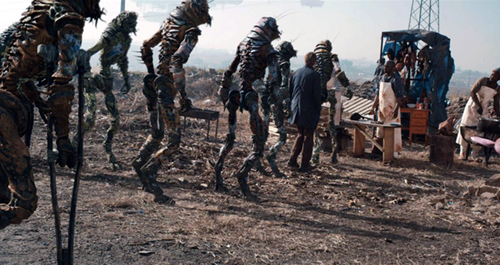The book Round Trip to America: The Immigrants Return to Europe, 1880-1930, by Mark Wyman, explains how millions of immigrants weren’t “immigrants” at all.
They were migrants.
Although there were 20 million migrations between 1890-1924, the return rate for that period averaged 35%, and many “immigrants” crossed the ocean back and forth several times.
Regions with the highest return rates were Southern Italy (60%), Romania (66%), and Slovakia (57%).
Between 1908-1923, 60% of Southern Italians returned to Italy (969,754 Italians out of 1,624,353).
Migrants labored in U.S. mines and stockyards, sweated in factories, and built U.S. transportation systems, but then traveled back home.
Many never considered living in the U.S. long-term, or becoming citizens.
One reason for returning home was that although American wages were higher, the working conditions were worse.
In 1895, Chicago stockyard workers—mostly migrants—labored alongside children in rooms “flooded with water, foul smells, smoke, and steam” for 10 hours a day and 16 cents an hour (the equivalent of $5.86 per hour today).
Children made half that amount.
25% of the immigrant workers at the Carnegie Steel South Works (in Pittsburg) died or were injured between 1907-1910.
According to Round Trip to America, “travelers on returning ships were repeatedly struck by the large numbers of injured, broken, or ill immigrants on board and the multiplicity of widows.”
Another reason for people returning home was nativist resentment.
One line from the poem by Emma Lazarus describes immigrants as “the wretched refuse of your teaming shore,” and that’s how migrants—especially those from southern Europe—were perceived.
An immigration inspector claimed in 1887 that the U.S. was “now receiving installments of the ignorant and degraded, a class that is little superior to the Digger Indians of the West.”
(“Digger Indians” is a derogatory term that was created to facilitate Manifest Destiny.)
More than 125 years later, former president Trump proclaimed (in 2023) that immigrants are “poisoning the blood of our country.”
As soon as many immigrants recognized what they were getting into, a good share (especially those who wanted to stay) stopped working for others, and became entrepreneurs.
The first millionaire American (from 1810 until his death in 1831) was Stephen Girard—a banker and shipowner who was born in France.
In the 1920’s and 30’s, many immigrants started their own grocery stores, bakeries and butcher shops.
Other immigrants founded small toy and food-stuff factories—idea-based businesses.
In 2023, immigrants are still the principal force behind new American businesses.
As Alexis de Tocqueville noted in the 1830’s: “in no country in the world are private fortunes more precarious than in the U.S.
It is not uncommon for the same man in the course of his life to rise and sink again through all the grades that lead from opulence to poverty.”
Fortunes are still precarious, in this modern country.
The Columbus Day holiday had an interesting origin.
It began in 1891, when eleven dark-skinned Sicilian immigrants were lynched in New Orleans.
(There were false rumors that the Sicilians had been “let off,” after killing a white man.)
Italian consulates throughout the U.S. were incensed.
A year later, President Harrison helped create a holiday that would kill two birds with one stone.
It would honor the 400th anniversary of the “discovery of America,” and help Italians enter the mainstream of American society.
During the Civil War, 25% of the men in the Union Army were immigrants, and another 25% were first-generation Americans.
During WWI, 18% of the U.S. soldiers were immigrants.
Detailed counts (on origins) weren’t kept for WWII.
However, Italian-American soldiers comprised at least 10% of the volunteers, and Polish-American soldiers at least 8% (far above their percentages in the U.S. population).
Scores of first generation Irish and German Americans volunteered to fight on the Allied side in WWII, seeking to prove their patriotism.
The current immigration policy is supposed to be based on three main factors—family reunification, labor market needs, and diversity.
The system is being overwhelmed, however, by asylum seekers (many bringing children).
According to the U.S. Chamber of Commerce, the U.S. has a labor shortage.
More workers—skilled, semi-skilled and unskilled—are needed in many fields: medicine, agriculture, hospitality, teaching, construction and manufacturing.
On the other hand, American business seems determined to widen the salary gap between upper management and blue-collar jobs, so many of the available jobs don’t pay very well.
Immigration is a very difficult issue.
An article by the Cato Institute in 2021 called the present system “archaic and barely coherent.”
An article on the Brookings Institute website, in 2023,* tells us that 80% of new technical jobs will go unfilled.
Are we allowing for asylum-seekers who may just want to work here, and find safety for their families?
Is it possible to recreate the immigration system so it isn’t tainted by nativism and prejudice?
* “Industrial Policy Will Require Immigration Reform,” Greg Wright and Emma Berman, September 29, 2023.








